|
Aid ‘em and Revo Denim… The culture of western civilization in the past century is a lie. Kill your heroes, bury your idols, and desecrate the graves. Art history is still a lie, and the galleries are far worse than dens of thieves. Now is the time to make sure you have something real to say. Don’t seek your voice in the candy-coated bubble-gum matrix of Art World, Book, Movie or Music Land. Transcend ‘em, know ‘em, aid ‘em and Revo Denim.
For the most immersive experience we recommend using a PC for the duration of your Third Friday viewing.
Pictures will often be formatted in rows of three, click on the thumbnail to enlarge the image. Thanks for visiting Rogue Gallery! Enjoy your stay! Steven Lee MatzJim MazzoccoSierra MatzDavid MacDowellGus Romero IVRF Pangborn
Thank you for visiting. Inter Sekt is an organization that works hard to continue bringing new and fresh artistic content from The New World Creative. You can show your support by shopping in our store where you will find select prints, original art and a variety of other items. Our store is powered by PayPal and is capable of accepting both PayPal and most major credit cards as payment. You may also make an anonymous donation by clicking the button below where you will receive confirmation for your contribution. Thank you again from The New World Creative.
0 Comments
A sense of duality: the poetic and the profane, the sacred and the salacious, the masculine and the feminine permeates the work of this month’s artist, whose main vehicle of expression is the written word. Laura Albert first burst onto the literary scene as both spectacle and spectator, when her first novel Sarah was published in 2000 under the pseudonym of JT LeRoy, it was met with both critical and cultural acclaim. Sarah, a beautiful, brutal, and phantasmagoric account of a young, gender fluid, male truck stop hustler (lot lizard) was said to be a semi-autobiographical account of the life of its author JT LeRoy. Which it was, his voice, channeled through Laura’s hand. The voice of Jeremiah “Terminator” LeRoy was born of Laura’s conversations with Dr. Terrence Owens via a crisis hotline in the late 1990’s. She had been calling crisis hotlines for years by this time, always as a boy, and at this point it was her major avenue of emotional, mental, and spiritual exploration. This would be the incubator for the germ of what would become JT. From the first call there he was, fully formed and crystalized. When Dr. Owens asked for a name Laura said “Terminator”. She would later state that: “He was my respirator. My channel for air”, and it was through her conversations with Dr. Owens that she would express herself and explore the avatar of Terminator. When Dr. Owens identified continuity problems in Terminator’s thought processes, he suggested that writing would help. What initially resulted was Balloons, a story in which a presumably adolescent boy collects the balloons that the heroin he buys is packaged in. The use of language in Balloons has echoes of Rimbaud in its ability to clearly create a visual image within the mind’s eye of the reader. It was more than fiction, it was poetry. Populated by phrases like: “No one knows about my collection, and I won't tell until The Time. I've had my plan forever, and I can't just go buy balloons; they have to be special magic balloons, baptized by saliva, made holy by the fear of getting busted with them, and transformed to the sacred by all the desires floating in the tension surrounding them. Our sweat, our fear, and my love.”, and “I feel myself getting lighter as branches of balloons spring from every limb. I tell them not to cry; I must rise for their sins. I am the Lord's outcast and will face him for all outcasts.” it was much more than just a work of art therapy and the first tangible proof of its author’s genius. Upon delivering this piece of writing to Dr. Owens office Terminator’s counterpart Speedie was born (complete with a cockney accent). The avatar of Speedie would become a crucial mechanism of something that was quickly snowballing into an endeavor which would blur the lines between the art and its creator. Ultimately calling into question the very archetype of the artist, and the expectations placed upon that role by a media driven consumer culture. At the same time questioning the status quo on a woman’s role in the literary and artistic realms of American culture, as well as those of people on the fringes of society, and in so doing tackled a plethora of modern taboos that few if any other writers were talking about at the time. Her writing was, in hindsight, extremely prophetic and incredibly ahead of its time. Today we take issues of gender identity and sexual assault for granted, we have open discourse on these problems and feel that we have a greater awareness of these things, but in the late 90’s and early 2000’s this was not the case. Baby Doll, another early piece, is the story of a boy dressing in his mother’s clothing in order to seduce her abusive boyfriend. It would be published in the compilation Close to the Bone: Memoirs of Hurt, Rage, and Desire. It was on the heels of this story that she, or rather Terminator, was offered a book deal for a memoir. Laura refused the deal not wanting to misrepresent her fiction as memoir. At this point she stopped writing altogether. A few years later she would write Sarah, which was published not long thereafter under the name JT LeRoy. Soon a cult of personality was springing up around the work of this new force of American literature which demanded that they see their idol in the flesh. It was with the help of Laura’s sister in law Savanna Knoop that JT would indeed become flesh. Over the course of the next several years many more events would unfold which would blur the lines even further between fact and fiction, drawing Laura and her inner circle further into the realm of celebrity, and later infamy. Two more books would be born from her pen via JT, The Heart is Deceitful Above All Things and Harold’s End, a movie was made based on the former title starring Asia Argento. In 2005 an article was published implying that JT LeRoy was in fact the invention of his manager/handler Speedie AKA Laura Albert. More articles followed on its heels and she was quickly labeled as the architect of literature’s most elaborate hoax. A hail of controversy followed which generated even more press, Antidote International Films, Inc. filed a lawsuit, accusing her of fraud for signing a contract as JT LeRoy. She was viewed as a pariah, her name and work were attacked and defamed by a media machine which had no concept of art, let alone sympathy for an artist that they hardly understood and couldn’t commodify. But this was not the end for Laura. She worked as a writer on HBO’s Deadwood, and wrote a slew of articles and screenplays, mostly under her real name. In 2012 she served on the juries of the first Brasilia International Film Festival and the Sapporo International Short Film Festival; she also attended Brazil's international book fair, Bienal Brasil do Livro e da Leitura, where she and Alice Walker were the U.S. representatives. Brazil's Geração Editorial re-released the JT LeRoy books in a boxset under Laura Albert's name, and she and JT were the subjects of the hit Brazilian rock musical JT, Um Conto de Fadas Punk (JT, A Punk Fairy Tale). (1) When all is said and done, the way that the work of this artist was initially presented was and is an extraordinarily revolutionary piece of art far ahead of its time. Of course, as exciting and beautifully bizarre as the JT mythos is, it is merely the cherry on top when one sits down and actually reads the work. Included at the end of this feature is the first chapter of the New York Times bestseller Sarah, we encourage you to read it. We have also included the trailer for Author: The JT LeRoy Story, it is a must see and a terrific companion to this feature as it explores our subject in much greater detail than we can go into here. We are very honored to present to you our October Spotlight Artist: Laura Albert. (*1-Excerpted from Laura Albert Wikipedia) The Laura Albert InterviewSteven Lee Matz- I would like to begin by thanking you for taking the time to speak with us. One of the aspects of your story that I personally find the most inspirational and thought provoking is the use of not one but two avatars (JT and Speedie), as well as the cast of characters that you would create to populate their lives. Which leads me to my first question, did the personas of JT and Speedie emerge fully formed or did you consciously develop them? Laura Albert- Terminator was Terminator from the moment he first spoke to Dr. Owens – there really was no conscious thought-process to create him. But he emerged after many years of stories of boys like him. When I was a child, in my mind at night, I would hear and see stories of children in crisis, usually boys. Sometimes they would go into my dreams, but most often this would happen before I would fall asleep. Sometimes they’d keep me up, or they’d wake me up, and I’d be crying. Sometimes the kid would survive and sometimes he would die. And in the daytime I would play with my dolls and play out the scenes and situations that I had watched at night. Terminator arrived fully formed, but a lot of stories had preceded his. As for Speedie, she was the advocate I needed to protect Terminator, and then JT LeRoy. At the time I was morbidly obese, my food addiction had taken over. It was a way of numbing myself, a behavior I had learned since childhood – and like any addiction, it is a progressive disease. It was self-destructive but also an effective way to keep people away and to mute my sexuality – which was problematic for me because of the sexual abuse I had experienced as a child. But I felt myself as a morbidly obese monster. And our culture tends to view and treat morbidly obese women this way. We are something to be feared, as if contagious. We wear our “disease.” Only recently has our culture begun to see different-sized people, ethnically- and gender-diverse people being represented in media in any form. Speedie allowed me to step into a persona who could be a fearless and effective advocate for my work. There is a gender bias in how a woman is allowed to express herself. Men are deemed passionate and forceful, but when women express themselves in exactly the same way, they are labeled emotional, hysterical, ranting, or even bitchy. When women go after what they want, they are manipulative, whereas that same behavior in a man is admired, he is a go-getter. Speedie allowed me to not give a fuck. To step out of my toxic shame and be someone who was OK being other people’s bête noire when needed. Because an advocate was also needed to set boundaries where JT LeRoy was being appropriated or taken advantage of. It’s as if I bifurcated myself: There was that aspect of me, “Terminator/JT LeRoy” who would give it all away, and then the Speedie being who was a fearless protective warrior. Making her Cockney was a version of the fearless Brooklyn women I grew up with, who would say it like it was – they were opened-hearted and generous, but knew how to go to war as needed. Speedie’s accent also gave me another layer, her own mask, and an essence of street punk that loaned her power. Speedie didn’t “know her place” as a fat woman who was not cute or pretty, who did not wear fashionable clothes or have a designer handbag. She carried shopping bags, and she was supposed to shut up and be ashamed. But Speedie was punk as fuck, and like me, she did not give a shit about that stuff. Even though it was painful to be mocked. The truth is, people liked Speedie, she was funny, generous, and free. At the time, no one complained about Speedie. And she allowed me to move beyond the shameful identity of a fat woman in a thin-body-biased culture. But there was no publicist, no agent, no manager, so when Speedie needed to set a boundary, she was the one who had to do that. She had to not care if it made people angry. And that fearless boundary-setting helped me learn to say no in my own life. To not be a people-pleaser. When you feel you have no right to live, it is hard to ask for what you need. Or to set boundries. As a child my body was not my own. I did not know what proper boundaries were. I learned over time, I was in foster care, in a group home, and I learned a lot there. But Speedie really helped me. At the time, I also had a baby. I would do whatever I had to do to protect this spirit that had come through my body. Speedie had that momma bear fuel in spades and helped me be an effective advocate for my young son, as well as for JT LeRoy’s books. My novel Sarah was born out of me not long after my son. What is interesting is that, after I was “outed,” people for the most part assumed right away that Speedie was Laura. I think that is a very sexist reaction – a lack of imagination on their part as well. They even pushed aside the fun times they had hanging out with Speedie, and focused on the times when Speedie set limits on their inappropriate behavior that they probably felt ashamed of. Speedie was the one who said, “No, you cannot give drugs to JT” and “No more plying drinks to JT” and “OK, press is over.” They always wanted to push for more. Savannah as JT wanted to go off and party, and Speedie was constantly having to be a sort of den mother. It was awful to be in that position, but was a helpful skill to learn. When an artist is being commodified, there always needs to be someone who makes sure they are treated like humans. That is why people have managers and agents. There needs to be someone willing to be the gatekeeper, to require respect. If there is no one like that, then they will not feed you, they will not give you breaks – but they will often supply drugs to keep the party going, to make the artist more pliant. Speedie was also mocked for asking for what is basic on any promotional tour, the food we needed: apples, almonds, soy milk. Fuel to keep us going through long days promoting their film, which we were not being paid for. It was not even close to being over the top, like some requests that rock stars have been known to demand. But as soon as I was outed, it was framed in a greedy grabbing way, because they saw Speedie as me, and anything she asked for, suddenly loomed larger. It was funny to me that people like Asia Argento – who had long lists of demands for hotel suites, stocked bars, drugs, and who got paid a fortune for wearing clothing she claimed to detest but had JT LeRoy wear, while of course not sharing any of her endorsement payments – had the hypocrisy and nerve to make fun of Speedie for daring to ask for water, organic apples and almonds. When an artist is being commodified, there always needs to be someone who makes sure they are treated like humans. That is why people have managers and agents. There needs to be someone willing to be the gatekeeper, to require respect. If there is no one like that, then they will not feed you, they will not give you breaks – but they will often supply drugs to keep the party going, to make the artist more pliant. I could not afford to hire an outside person, so Speedie was that gatekeeper. And it was only resented after I was outed in the press. How dare I be both the advocate and the exploited beloved talent?! I had to be one or the other. So it was easier to take the route of unconscious gender bias and procliam, “Laura WAS Speedie and she is a monster!” And it was easy to parlay Speedie to the cliché role of cunt. And because they saw Speedie in my body, while JT was presented in Savannah’s body. The being of Terminator/JT, all the vulnerable mischievous sweetness of that being, as well as all the writing, was from me. But that was quickly dismissed, leaving me, Laura Albert tagged a “manipulative cunt.” Which is another word for publicist/manager/agent – woman. After having been outed, I have traveled by myself to book festivals, I have been a judge at film festivals, I opened the documentary Author: The JT LeRoy Story around the world, and I have given lectures, talks, workshops – but it is hard for me to summon my inner Speedie. She is there, but it is only when I feel really taken advantage of that she will come storming out to set a boundary. I am still learning how to be an advocate for myself in a healthy way. I know many women struggle with this balance. I want to be liked. But how do I protect myself as well? Also, I am sensitive to the point of being gun-shy about those accusations – that if I ask for what I need, I am that cunt Speedie. Plus I no longer have that boundary of fat around me. I was 320 lbs. My body is normal-sized now and I feel much more vulnerable. But now I am available. People can come to hear me talk about the work and I can meet with them without the firewalls I had. It was awful for me, when people wanted to talk about what the JT LeRoy books brought up for them, and they were faced with a JT LeRoy who could only sit there and nod. Savannah had not had the experiences I had. She once said to me that she wished she had had real trauma happen to her, like Asia and I had experienced, that she felt embarrassed about her privilege. And she was not able to respond to the fans who wanted to connect around the issues I had so fearlessly explored, because she had no clue. But now I can make myself very available. When I read, I will sit with every fan until they say all they need to, or the venue closes. It is a very moving and healing experience for me. And it sure took a long time for me to be ready to do that in my own skin. I know there is a gift beyond my writing – the added bonus is the complex way I presented it. It has fostered more awareness of sexual and psychical abuse, gender variance, addiction, obesity, etc. In 1995 Dr. Vincent Felitti ran an obesity program at Kaiser Permanente in San Diego. But he had a 50% drop-out rate, just when those quitting were losing up to 100 pounds. “As we interviewed almost 300 of the dropouts, every other person spoke of having childhood sexual abuse; most of them seemed to have been waiting to tell someone after hiding it for years,” Felitti said. “They also often mentioned verbal and physical abuse and other traumatic experiences such as watching their mother being beaten." This reveals how we are only at the tip of an iceberg in our exploration of what is now called developmental trauma and its fallout. That’s why the more stories people are allowed to tell, in whatever manner they can, the better. What was it like for you, both emotionally and artistically, when Savannah Knoop took on the role of J.T. and he became a living person? I saw JT take over Savannah; it didn’t take long before he was really just stepping into her when she had to appear in public as him. For me it was validation of JT’s realness, that he could be channeled in this way. I did not see Savannah, I saw JT when we were out in public. When we got back to our hotel room we would have to decompress. It was a process. Me letting go of Speedie, and she of JT. But they had moved into us, so it was complex. The same when an actor is given over to a role they are playing. Some do not let go of it for all of filming and some even after. The role River Phoenix played in My Own Private Idaho deeply affected him, and there were destructive behaviors he continued after his role ended, which led to his tragic death. Likewise, I think Argento was attracted to the role of Sarah in The Heart is Deceitful Above All Things because it tapped into her identity of both victim and victimizer. And she apparently did not stop playing this role with others, particularly the boy Jimmy Bennett who played her abused son, and whom she later slept with while he was still legally a minor. I did not identify as female in a vast majority of the time spent in my body or my thought. There was no language for that. The term gender variance did not exist. And transgender was a scary word, it was still being viewed as a mental illness... Writing as Terminator/JT LeRoy allowed me the freedom to create when gender variance did not yet have a name. You began writing at the suggestion of Dr. Owens, because he said that it would help JT with his continuity issues. My question is when you would write at that time, would you be fully immersed in JT or were you able to keep different methods between Laura and JT? Dr. Owens told Terminator he should write, and starting with “Balloons,” Terminator was writing. It was all drawn from my own life experiences and feelings, and from things that had happened to people I’d known. I wasn’t really writing from my imagination, not in the way that a genre writer does, saying, “OK, I am making a character up.” I was writing in a voice that had its own way of using what I had inside me. I was writing when I was a ward of the state in foster care, I had won scholarships to go to college. But a writing teacher – who I very much loved – at that time would not allow me to write in a male voice. She forbade it. I was writing stories of abuse, kids who were going through physical and sexual abuse. My issues. I begged her, I said to her, this is the only way I can explore this stuff in fiction, with a male voice. But she had experienced too many young writers making a mess when they wrote in the voice of the other. She thought, best write what you know first. I had no way to express to her that, even though I presented as female, that was not my inner life. I did not identify as female in a vast majority of the time spent in my body or my thought. There was no language for that. The term gender variance did not exist. And transgender was a scary word, it was still being viewed as a mental illness. To be forced to write in a female voice was too exposing to me. It felt shameful and disgusting. Remember, ever since I was a young child, I had had the release valve of telling stories in a male voice. I very much wanted to be a boy, but my body was in no way masculine. Being chubby, made it worse. I had breasts early, which I detested. After writing about sexual and physical abuse with a girl protagonist in college, I had a break down, I dropped out of school and had to go to a hospital. I would not write about these themes, these issues in a purely female voice for almost thirty years. But now I am able to write my memoir. Writing as Terminator/JT LeRoy allowed me the freedom to create when gender variance did not yet have a name. Were there any other personas that you wanted to experiment with or bring to life during the JT era of your work that you never got a chance to? JT represented a kind of culmination, the most elaborate expression of a defense mechanism. My methods for containing and responding to my own trauma had become so deep and reflexive – and they were so intertwined with my own drive to write and communicate and testify to what was happening – that everything finally coalesced or condensed or distilled into JT. Who are your main influences artistically? I have been getting to know Sheila Heti, and I very much appreciate how she discusses her process of writing, how honestly she explores what she wishes to write about. It intrigues me how she fearlessly writes very personally, as in her latest book, Motherhood, but she does not call it memoir, she moves it into the realm of fiction, which is hard for many critics to accept. They pass personal harsh judgments about her actual partners even though she states them as fictional. She cuts the lines thin, but that is her right as an artist. Yet it seems to upset many critics, even though it allows her to protect people’s identities and merge her characters to explore a deeper truth. Her writing structure has a collage-like form to it, and that has been wonderful for me, to study her wonderful craft and discuss it with her. I go back a lot to the wisdom of Oscar Wilde, who saw himself go from being the most celebrated writer of his time to being imprisoned, sentenced to two years hard labor, because his behavior was deemed immoral. Oscar Wilde said, "A critic should be taught to criticize a work of art without making any reference to the personality of the author. This, in fact, is the beginning of criticism." The author eventually goes away, but if the art is any good, it stays. That's why people still read Homer and stage Aeschylus, while knowing almost nothing about those authors. Focusing on the author rather than the art is like throwing away the banana and eating the peel. But in our society, authors are commodified and merchandized just like their art is, so naturally people get confused... That is why I am concerned when people start focusing too much on the creation of JT LeRoy, and confusing it with an actual hoax, which is something that falls apart very quickly because there is no substance behind it – it dissolves like cotton candy. I wrote real books of fiction, which sustained the fiction of the JT LeRoy persona. To again quote Wilde, "We have no right to quarrel with an artist for the conditions under which he chooses to present his work." What is wild in this day and age, with very little new creativity under the sun, is that most people now celebrate how I was able to do something new within the boundaries of fiction, of art itself. Of course, a few still want to quarrel with me for how I chose to present my fiction. And like was done to Oscar, some need to demonize and even criminalize me. When the lawsuit was brought against me by Antidote Films, they actually presented an inch-thick binder of why CRIMINAL charges should be brought against me. I had not stolen money from anyone, or mispresented any funds, but because I would not let them co-opt my story, they wanted to frame my fiction as criminal. The judge quickly threw that out, recognizing it for the sham it was. But this is dangerous, this need to control the way fiction in ART is presented. My fiction has a felt authenticity with issues that very much need to be explored in the realms of fiction and non-fiction. I hear from people all over the world, who are grateful to find a voice and story they recognize as true. Much the way J.K. Rowling captures so authentically the emotional truth of Harry Potter and his magical world, that people have been known to injure themselves trying to shove their way through a brick wall to catch the Hogwarts train, at the now playfully labeled “Platform 9 3/4” at Kings Cross Station. One trend we need to be vigilant in guarding against is the assault on artists and the way art is being corralled into “fake news.” The writer George Saunders has spoken extensively about the peril of confusing the fabrications an artist creates within the realm of their art and the specter of news reporting and politics. There is a very big difference, they are very different domains. Saunders discusses the danger of taking artists who play within storytelling and making us part of the general problem of lying and “fake news” as a threat to our society. Saunders says, “It’ll start to become a general distrust of artists and intellectuals… the Trump movement started saying everything was fake news. That’s an example of the kind of the line-blurring that happens when an anti-intellectual program is in place… This movement is going to come after the intellectuals, in some form or another. That’s what these movements do.” Saunders reminds us about the importance of the freedom of the imagination, which again is very different from “fake news.” I think everyone needs to read this quote from him: “(Fiction) trains us, in precision of thought and expression, and more importantly it reminds us there’s a part of the mind that is very expansive and intuitive and empathetic, that is as real as any other part of the mind. And when you’re doing a work of art or when you’re receiving one, I think you’re reminded at every moment, that way of thinking is real.” That’s right. And there is a contract that we enter into when you pick up a book that says “novel.” You consent to that... process. I am very excited by artists who have different sized bodies, of various races and ethnicities and genders and ways of identifying, and who now have platforms to tell their stories. Lena Duham had a huge impact on me. I stopped wearing shorts at age twelve because I did not see anyone with chubby thighs wearing shorts on TV, in any magazines. The fat girl was the joke, the sidekick. Lena changed that fearlessly. I see so many millennials expressing pride in their curves, while there is still so much messaging that thin is best, there is also a growing counter culture, that is fast becoming mainstream – women can feel pride in whatever way they want to express their bodies. When I was a kid, a girl or woman who was overweight would be mocked for daring to have pride in her body. There are models now that are gender variant. I am also collaborating on projects with photographer Christelle de Castro, a gender-non-conforming lesbian. The writer iO Tillet Wright has the rare and exquisite gift of peeling back layers of identity and showing how we carry not just our stories but our forebears with us in forming our identities – with none of the usual one-dimensional blaming or hostility. There are so many artists who in the past would not have been invited to the table. They no longer have to fight quite so hard to be heard, and it’s about time that a broader spectrum of representations became available. I remember when I was a kid getting Seventeen Magazine, and no one in that mag looked like me or expressed anything I was experiencing. They were selling a narrow ideal of beauty and identity – and if you do not find yourself represented, it only compounds the isolation and loneliness. While they still have to deal with bias and educate people, it is not the uphill battle that it was. All of this gives me so much hope. On TV, we are not watching stories where we as an audience are trusted to care about characters you never saw on TV before. People of color, trans people of all races, body sizes, older women – I love how some TV shows Trojan-horse it, like Orange Is the New Black. It starts out ostensibly about a blonde-haired blue-eyed wasp, but next thing you know, we are caring about characters very few white male old-school executives would ever risk allowing to be protagonists of TV shows. There will always be a demand for escape shows, like Housewives, Kardashians or Bachelor type shows. But people also want to see people they know, who we are. This is what excites me. I am also very inspired by music that in the space of a song can take us on an emotional journey. The Smashing Pumpkins are back, and their show blew me away. Shirley Manson is a powerhouse and explores complex issues in her songs, if you pay attention – it’s devastating. I also am very taken with the band Big Thief. They remind me of Mazy Star meets My Bloody Valentine, but they are very much their own thing. Author: The JT LeRoy StoryAbove are the American editions from HarperCollins. Find the books in your favorite format by clicking here. 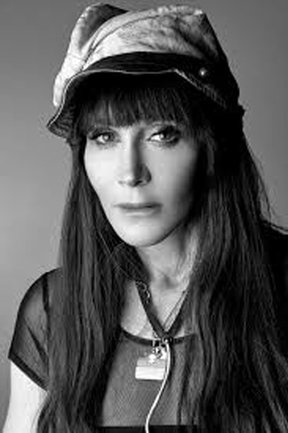 Laura Albert won international acclaim writing fiction as JT LeRoy. She is the author of the novels Sarah and The Heart Is Deceitful Above All Things, reissued by HarperCollins, and the novella Harold’s End, with illustrations by Cherry Hood. She is also the subject of Jeff Feuerzeig’s feature documentary Author: The JT LeRoy Story and Lynn Hershman Leeson’s film The Ballad of JT LeRoy. Cinema Eye, the organization that recognizes outstanding craft and artistry in nonfiction filmmaking, cited Laura Albert in Author as one of its 2016 list of Unforgettables: the year’s most notable and significant nonfiction-film subjects. Laura’s books have also been reissued in the UK by Little Brown. Brazil’s Geração Editorial also re-released the JT LeRoy books in a boxset under Laura’s name – and she and JT were the subjects of the hit Brazilian rock musical JT, Um Conto de Fadas Punk (JT, A Punk Fairy Tale). Laura contributes to print and online publications internationally, in a career that includes the cover feature for Man About Town and articles for The New York Times, The Forward, The London Times, Spin, Film Comment, Filmmaker, Interview, I-D, Vogue, The Face, Dazed and Confused, and VESTOJ, the Platform for Critical Thinking on Fashion. She was a contributing editor to Black Book, I-D, SOMA, and 7×7 magazines and is currently an editor for Diane Pernet’s A Shaded View On Fashion (www.asvof.com), and the Outpost section of psychoPEDIA.com. She has written for dot429, the world’s largest LGBTA professional network, and been an invited speaker at their annual conferences in New York. Laura’s writing has brought her to speaking engagements from the story-telling series The Moth in New York to Foyles bookstore in London and Brazil’s international Bienal Brasil do Livro e da Leitura, where Laura and Alice Walker were the 2012 U.S. representatives. Her interview given to Nathaniel Rich was the cover feature of the Fall 2006 issue of The Paris Review; she also gave an extensive interview to Adam Langer for the August 2013 issue of Interview Magazine. She wrote the original script for Gus Van Sant’s Elephant, winner of the 2003 Palme d’Or at the Cannes Film Festival, and was Associate Producer. For Asia Argento’s film adaptation of The Heart Is Deceitful Above All Things, which premiered at the Cannes Film Festival, Laura served as Associate Producer. She also co-scripted Jean-Claude Schlim’s film House of Boys and was a writer for the HBO series Deadwood. Her writing for short films includes Radiance for Drew Lightfoot and ContentMode, and Dreams of Levitation and We Vault for Sharif Hamza and Nowness. In 2012 Laura served on the juries of the first Brasilia International Film Festival and the Sapporo International Short Film Festival. The editor of Da Capo Best Music Writing 2005, she has contributed writing to such short-story anthologies as The Best American Nonrequired Reading 2003, edited by Dave Eggers and read by Tatum O’Neal on audio edition; MTV’s Lit Riffs; XXX, edited by Timothy Greenfield-Sanders; Nadav Kander’s Beauty’s Nothing; and The Fourth Sex, Adolescent Extremes, edited by Francesco Bonami and Raf Simons. She has also been published in Francis Ford Coppola’s Zoetrope: All-Story, McSweeney’s, and the Oxford American Music issue. She has written liner notes and biographies for musicians Billy Corgan, Liz Phair, Conor Oberst, Bryan Adams, Nancy Sinatra, and Courtney Love, as well as the liner notes for the Criterion Collection DVD of My Own Private Idaho, which features an audio segment with JT, Gus Van Sant, and Jonathan Caouette. With the band Thistle LLC, she contributed songs to the film Andy Warhol: Morning Star; she was also the voice of Warhol, reading from his Philosophy and Diaries. She also contributed to a podcast project for San Francisco’s MOMA on Warhol. Laura has collaborated with director and playwright Robert Wilson and with Noah Khoshbin for the international exhibition of Wilson’s VOOM video portraits, as well as for the catalog of Wilson’s “Frontiers: Visions of the Frontier” at IVAM Valencia. Profiled as an “indie fashion fighter” in the Style section of the San Francisco Chronicle, Laura has served as a member of Diane Pernet’s ASVOFF fashion film competition jury. Steven Klein has photographed Laura for QVEST magazine; so has Kai Regan, for his “Reckless Endangerment” at ALIFE. She has also done fashion shoots for Christian Lacroix and John Galliano, written films for ContentMode and Nowness, and interviewed numerous designers. ContentMode has published her series of fashion-related interviews with film and television actors. She coordinated a fashion show as an HIV/AIDS fundraiser for the Academy of Friends Oscar Party, bringing together Melange Productions and the multi-talented young people of Project Level – an arts academy for at-risk youth in San Francisco, where Laura was Director of Strategic Development – to create looks for the show, which they modeled. Laura also arranged for model and activist Rain Dove Dubilewski to walk the runway as JT LeRoy for the 2014 HIV/AIDS fundraiser held by the Academy of Friends Oscar Party in San Francisco. Laura profiled award-winner Juergen Teller for the 2003 Citibank Photography Prize catalogue, and was a catalog contributor for both the “Blind Cut” exhibition at New York’s Marlborough Chelsea and “An Autobiography of the San Francisco Bay Area, Parts 1 & 2, Part 1: San Francisco Plays Itself” at SF Camerawork. Laura has collaborated with Williamsburg band Japanther, releasing a limited-edition cassette under the name True Love in a Large Room, with original artwork by Winston Smith, and with the San Francisco band The Size Queens on The Size Queens III album. A spokeswoman for the successful “Heart for Eye” campaign to raise funds for restorative eye surgery for children, Laura hosted a television segment and was both an interview subject and an interviewer of inspirational women such as Anastasia Barbieri and Anh Duong. As part of the campaign, she was photographed by Marc Horn in ads that ran in Korean Vogue, Harper’s Bazaar, Elle, W, Marie Claire, and other publications. She has also taught at Dave Eggers’ 826 Valencia and California College of the Arts in San Francisco, and lectured with artist Jasmin Lim at Artists’ Television Access with SF Camerawork’s Chuck Mobley. For several years Laura was the chief entertainment/travel writer/personality for Bayinsider.com, a San Francisco City Guide produced by Cox Interactive Media in conjunction with KTVU/Fox 2, KNBR and The Ticket 1050. She has hosted a series of radio segments at KPOO and KUSF on film, food, and travel. Laura’s other credits include being weekly show host for Rolling Stone, an Internet RealAudio show for Web Entertainment Group; travel writer for a New York-based publication, Singles Almanac; and lifestyle columnist for The Web Magazine and Maxim magazine. Sarah |
A great specter is looming over the art world: the specter of Inter|Sekt. For far too long we have watched the artists of our generation turned into a disposable commodity, bought and sold by the galleries, stifled in their expression by the tastes of the art consultants who purchase pieces on behalf of financially minded clients who want a "solid investment".
They have been amalgamated into schools, said schools are a device of gallerists and art historians to divide and conquer the creatives and free thinkers. For we live in a nation which thinks itself to be free yet is not, they expect the same of their artists. Our culture has been raped and plundered by the upper echelon, picked apart and sold by the same greed mongers who claim to be it's patrons. The tool which has most effectively stunted the growth of modern American art in particular is the clever indoctrination of this idea of schools to not only the art student but anyone whom even reads a brief survey of the history of art sees that it is broken up into these categorized schools; the philosophies of these various sects creates conflict, division, and ultimately destruction of the morale and submission to the established order. Thus rendering the creative spirit confused and useless. This helps curb the rebellious spirit of the average citizen outside of the art world in other spheres of society. Art history is a lie and galleries are dens of thieves! Inter|Sekt is not destroying the schools or the galleries, we are simply showing you they were never real, at least not in a world outside of that constructed by academics to sell text books to art students. The reign of the gallerists and art consultants is over when you want it to be. From the ashes of the indoctrinated schools of every form of art shall arise The New World Creative. -Steven Lee Matz- The inter|sekt manifesto
CategoriesStaff
Jim Mazzocco Archives
September 2021
|


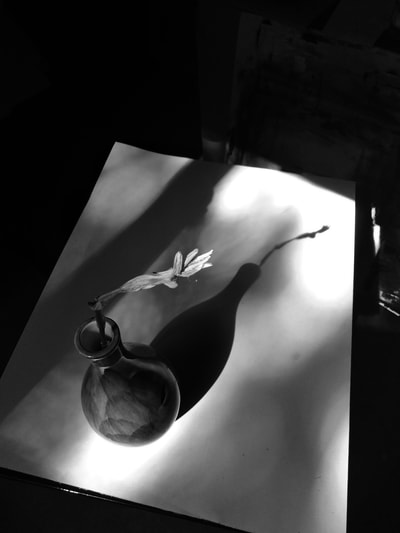


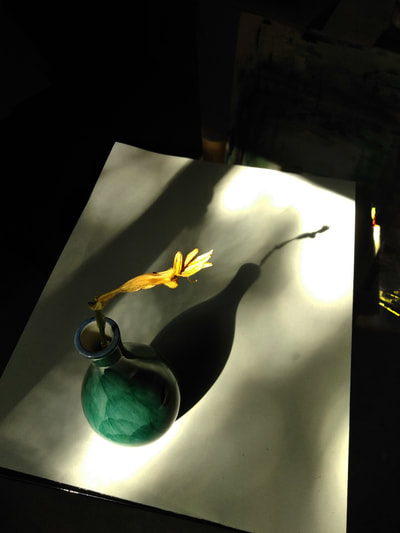





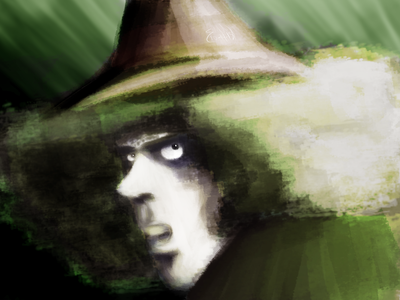
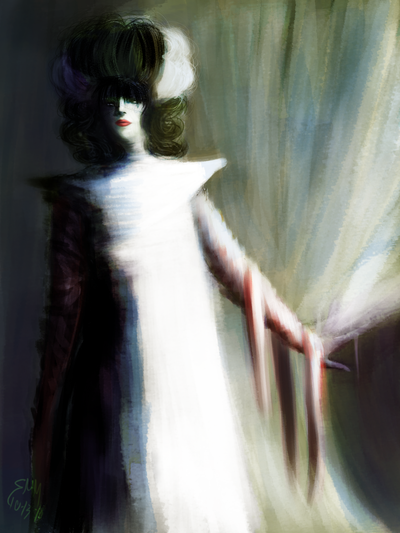

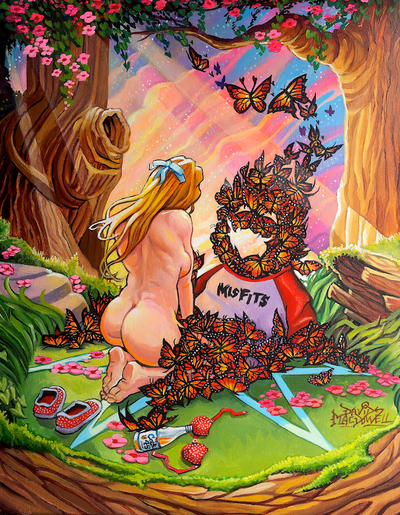
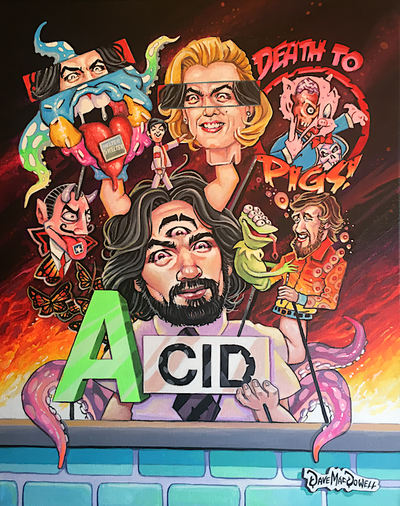

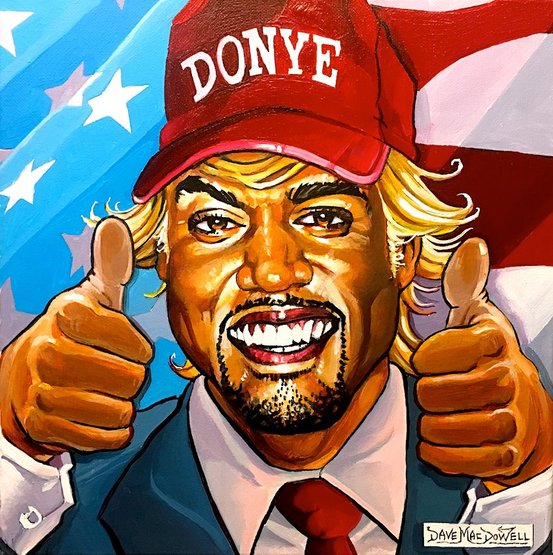
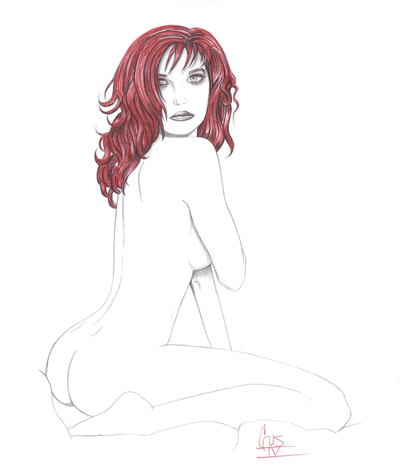
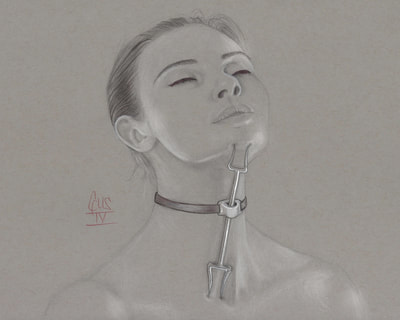
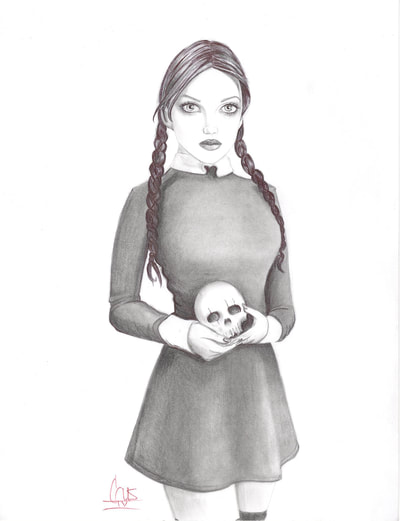
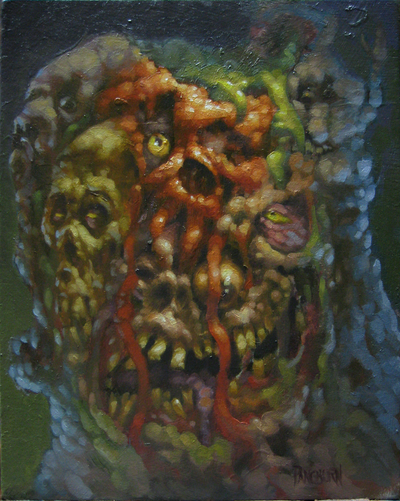
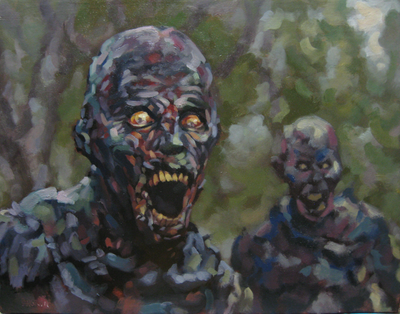
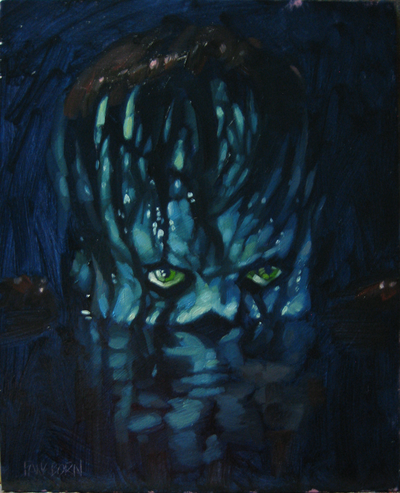
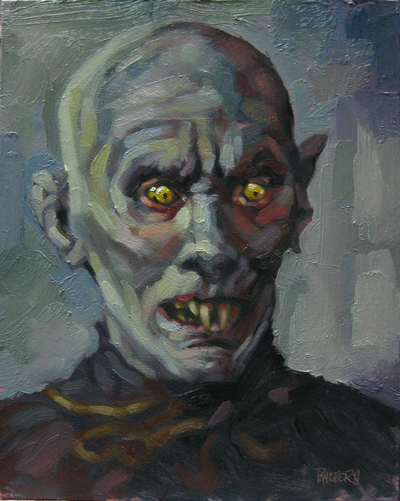
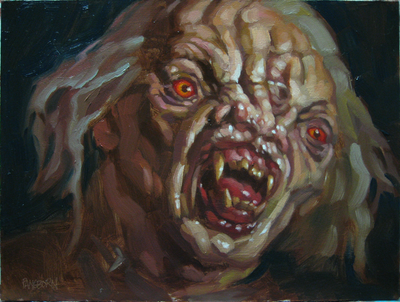
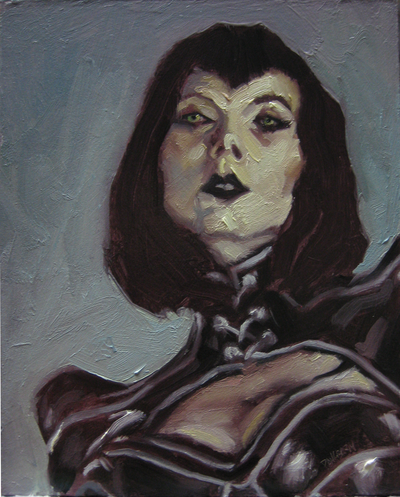
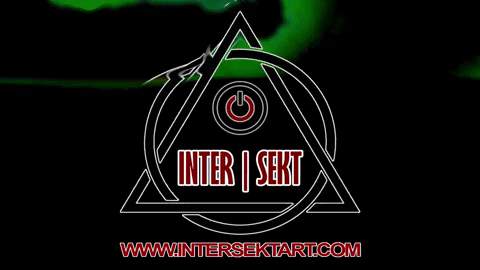
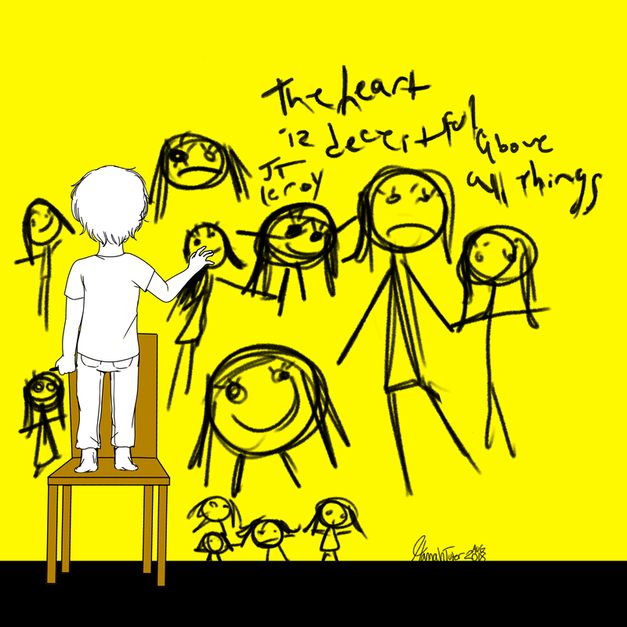
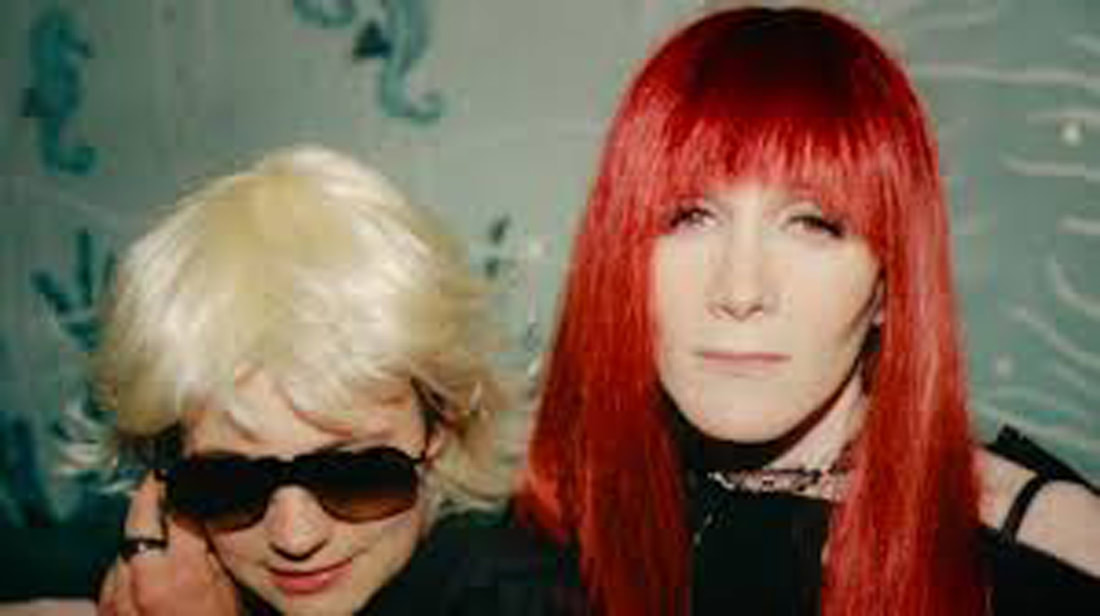
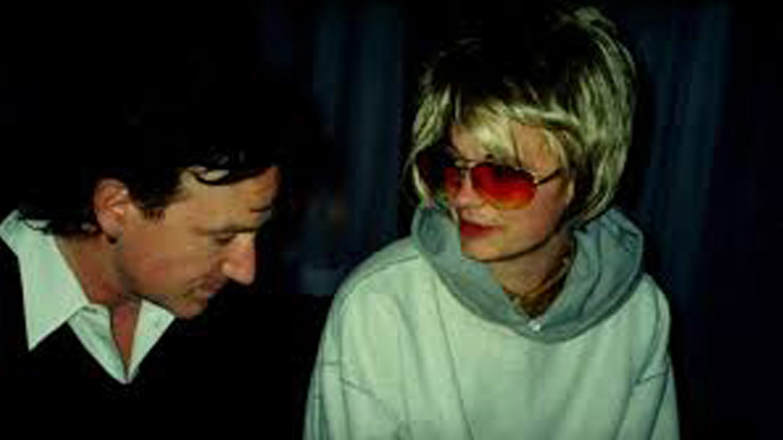
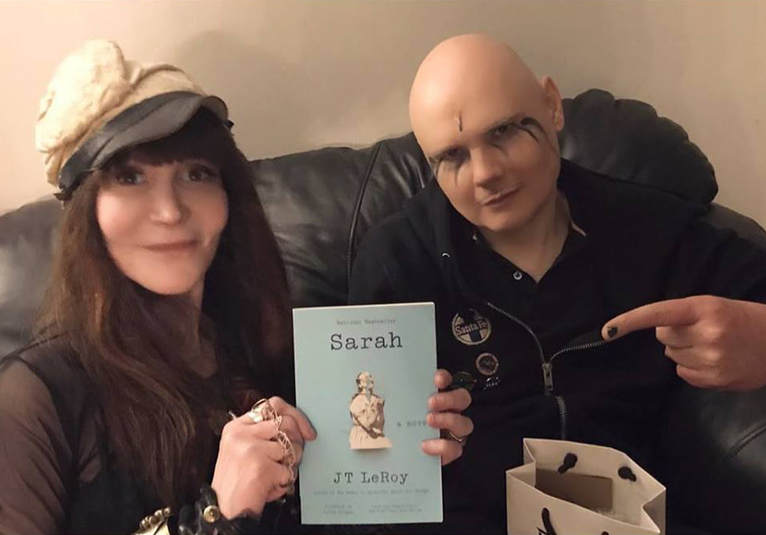

 RSS Feed
RSS Feed
